Have you ever encountered the dreaded prospect of camping in the rain? You’ve gone through the tedious process of pitching your tent, only to discover that you’ll be spending your time listening to the pitter-patter of raindrops on your tent’s fabric instead of experiencing nature and having fun outdoors. Don’t worry – we have put together this definitive guide about how to keep your tent dry in the rain so you can stay safe and enjoy your time camping no matter what kind of weather is thrown at you.
Before You Go Camping
One of the most important steps to keeping your tent dry in a rainstorm is making sure you have the right gear before you go camping. Investing in a reliable, waterproof tent is essential if you want it to protect you from the elements. It’s also worth considering purchasing or using a tarp or groundsheet, which can keep the tent floor dry and free of any moisture that could seep through.
Finally, don’t forget to take along a few items for keeping your tent dry during a storm. A good quality rainfly is essential, as it will provide extra protection against the elements. Stakes and guylines are also important for keeping your tent secure in high winds or heavy rain, so make sure you bring some along too. Extra waterproofing materials such as seam sealers and sprays are also worth having on hand just in case.
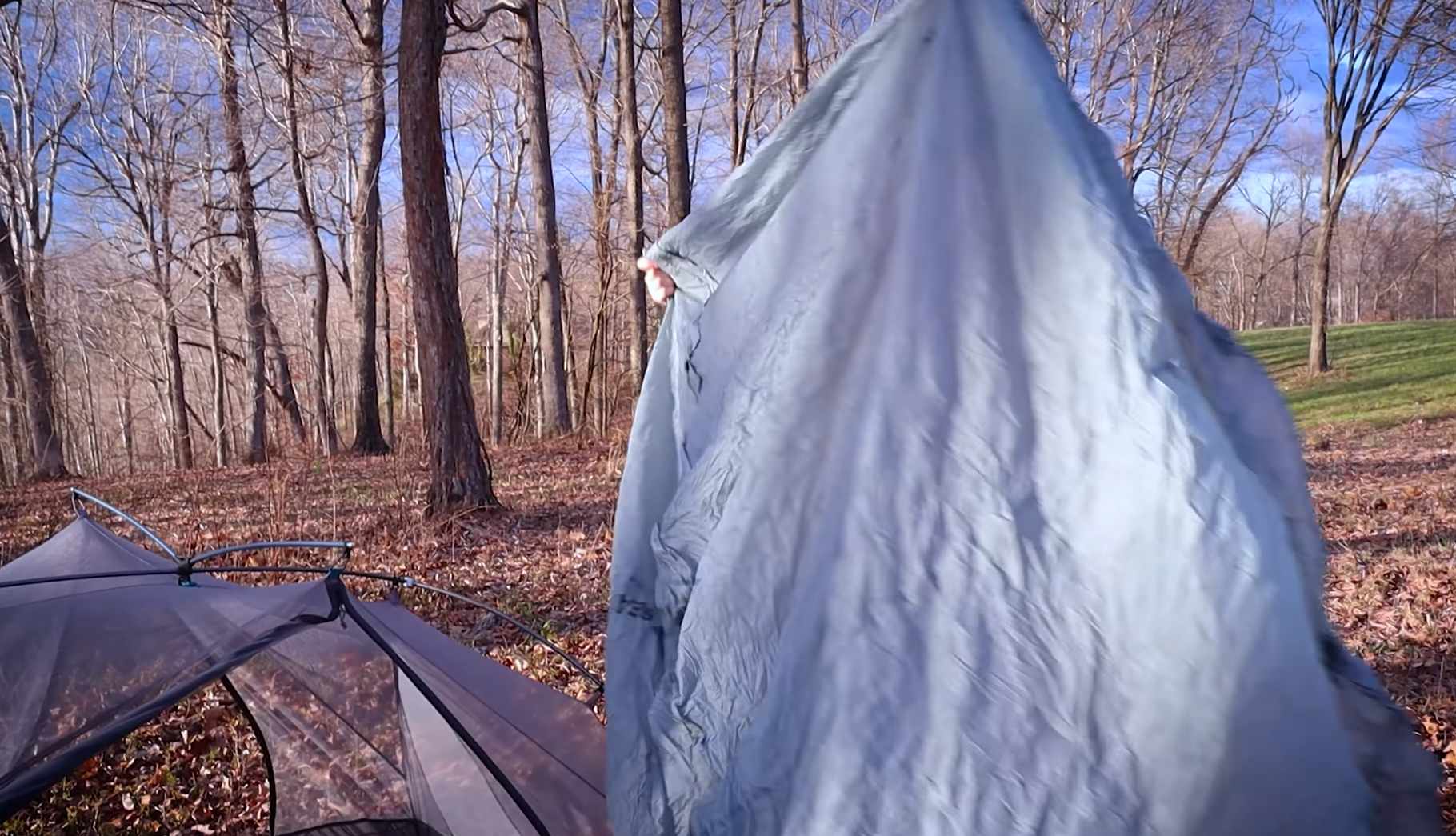
Waterproof your tent
You can do this by investing in a good quality, waterproof tent cover and applying a coat of water-resistant sealant to all seams and fabric. It’s also useful to check for any holes or tears that may have occurred over time and patch them up before heading out into wet weather. Additionally, you should also bring along some extra tarp material so that you have something to place beneath your tent when setting up camp. This will help ensure that no water gets through from underneath as well.
Know your weather
One of the most important steps is to know what kind of weather you can expect. Depending on where you are camping, you may wish to check local forecasts or even consult a meteorologist for more information. Knowing ahead of time the type and amount of precipitation that will be falling can help you plan accordingly. If it looks like there’s going to be heavy rain, pack extra tarps or other waterproof material in case some areas need additional protection.
Bring a tarp
A tarp is a great way to keep your tent dry in the rain. It’s lightweight and can easily be thrown over your tent, providing an extra layer of protection against the elements. There are a few things to consider when choosing a tarp for maximum effectiveness. Look for one that is made from a waterproof material like polyethylene or nylon, which will help keep water out while still allowing air circulation inside. Additionally, make sure that it covers the entire area of your tent so that all areas are protected from any potential leaks. Lastly, if you’re camping in an area with heavy winds, get one with grommets around the edges so you can secure it in place with stakes.
Use a tent footprint
A tent footprint is a ground cloth made out of waterproof material and designed to fit the exact measurements of your tent. Tent footprints are placed under the tent to provide an extra layer of protection from water and moisture. They also offer additional padding that can make camping more comfortable. When using a tent footprint, be sure to place it beneath the entire floor area of your tent, so that no part of the floor is exposed directly to the ground.
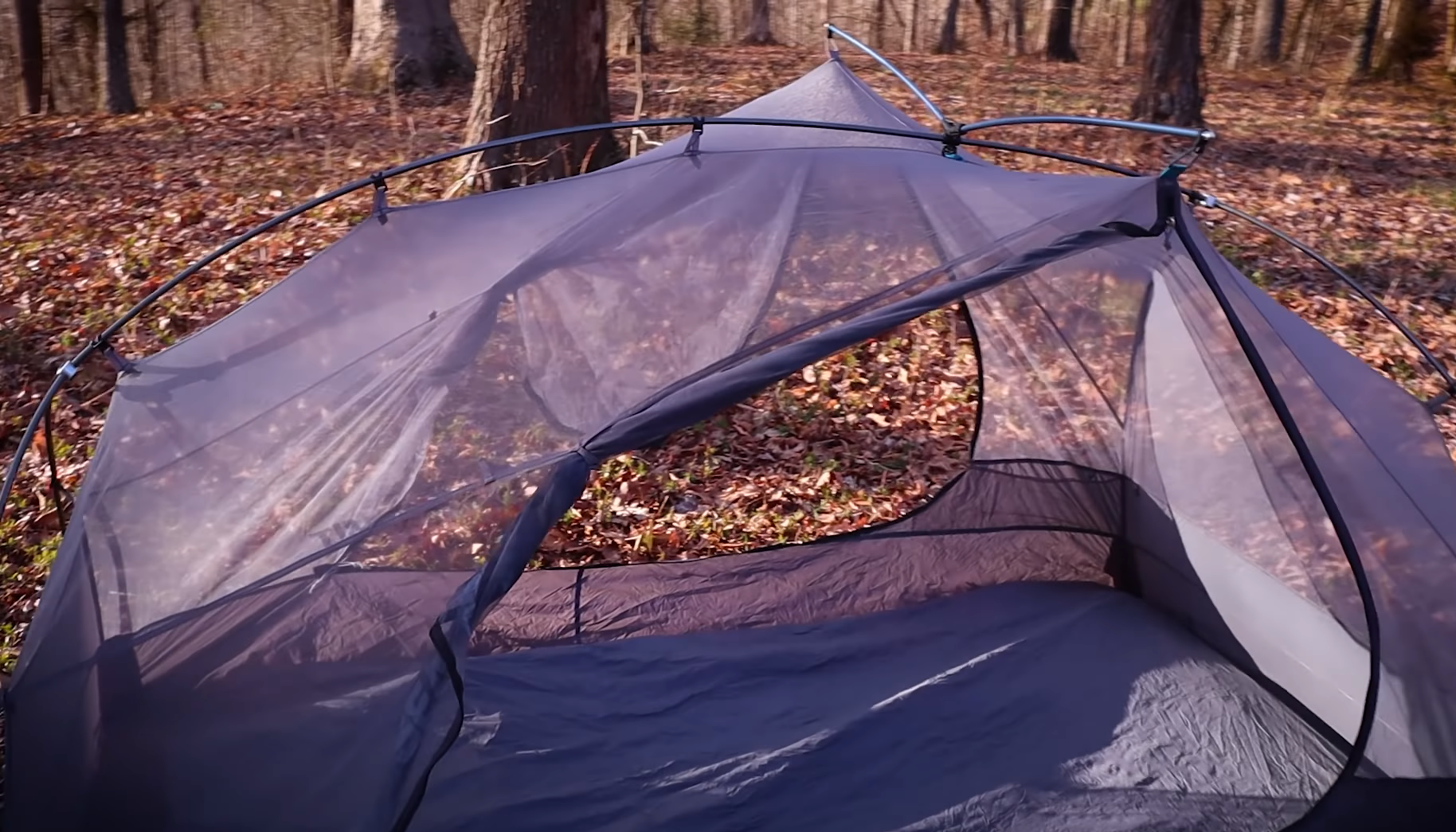
Keep items dry inside your tent
One of the best ways to ensure your tent stays dry during a rainstorm is by making sure the items inside stay dry. This means that if you’re putting any electronics or clothing in your tent, make sure they are properly secured and sealed in Ziploc bags. You could even consider covering electronic items with a plastic bag as an extra layer of protection.
Finally, it’s important to plan ahead. Be sure you know which items need to stay dry, and pack them accordingly. This will minimize the amount of water that can get into your tent during a storm.
During Camping
When you are out camping and the rain starts coming down, it can be a stressful situation. You want to make sure that your tent stays dry so that you don’t have to worry about sleeping in wet conditions. Here are some tips:
- Make sure you choose a spot wisely – A flat, level area with good drainage is essential when it comes to setting up camp during the rain. Avoid any areas with standing water or marshy ground as these will not provide much protection from the elements. Investing in a tarp is also really helpful and can help protect your tent against even heavy rains.
- Set up an effective shelter – There are many different types of shelters that can be used to keep your tent dry in the rain. To begin, you should select a spot that is sheltered from wind and rain. Then set up your tarp or shelter over the tent so that it will provide extra protection against wind and rain. Be sure to check for any areas where water could be seeping through as this could cause damage to your tent.
- Seal any seams – Once you’ve set up your shelter, go over all of the seams on the tent and ensure they are sealed properly. This will help prevent any moisture from seeping inside and ensure that everything stays dry. Consider using seam sealer or waterproofing spray if needed.
- Leave some ventilation – Make sure to leave some ventilation in the tent so that moisture can escape. This will help keep condensation from building up and reduce the chances of your gear getting wet.
Location, location, location!
The old adage is true when it comes to keeping your tent dry in the rain. Where you choose to pitch your tent can make a difference between waking up in a wet mess and staying nice and dry.
If possible, look for higher ground or areas that are slightly elevated. This will allow water to run off naturally away from your tent rather than pooling around it.
Additionally, avoid low-lying areas like valleys or near rivers where flooding could be an issue. Instead, pick higher spots that don’t have any plants blocking the drainage paths — these obstructions can create pools of standing water which can then seep into your tent through the fabric or seams!
Finally, check for signs of water runoff from the area before you settle in. If you notice any, it’s best to move on and find a better spot for your tent.
Tarp up
One of the best ways to protect your tent from rain is by using a tarp. The tarp should be placed over the roof of your tent and pegged securely so that it doesn’t blow away in strong winds. Make sure the edges are secured down tightly so rain can’t get inside. This method also helps prevent condensation from forming on the inside of your tent due to warm air outside and cold air inside. If you don’t have a tarp, you can use an old sheet or blanket as a makeshift one.
Using a tarp is an effective way to keep water from getting inside your tent, but it’s also helpful for keeping other debris away too. Things like leaves, twigs and dirt can accumulate quickly on top of a tent if left unprotected; this will inevitably lead to dampness accumulating inside as well. A tarp helps prevent these kinds of things from collecting on top of your tent while still allowing enough airflow to prevent condensation.
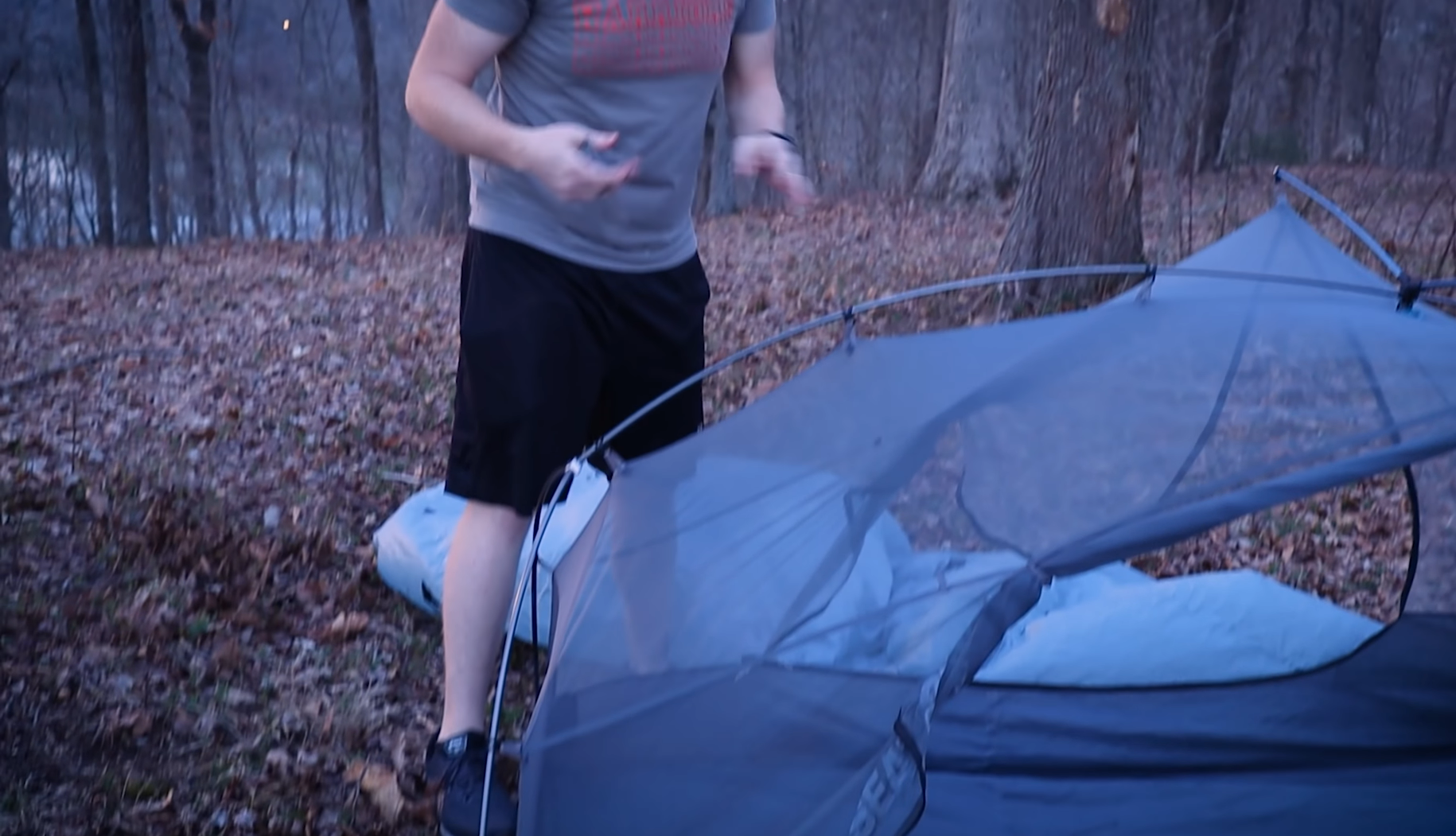
Consider your campfire
Campfires can provide a great source of warmth and light during your camping trips, but they can also create quite a bit of humidity. If you are going to have a campfire near your tent, ensure that it is at least 5–10 feet away from the tent’s walls. This will reduce the amount of moisture that gets into the tent and help keep it dry. Additionally, if possible try to use wood as fuel for your fire instead of coal or synthetic materials which generate more smoke and create even more humidity inside your tent.
Angle for the weather
One of the most important tips for keeping your tent dry in the rain is to choose a campsite that is sheltered from the wind. Choose an area that is slightly sloping so that water doesn’t pool around your tent. Use trees, hills, or rocks as natural barriers to create a kind of windbreak and protect your tent from getting wet. If you’re camping in open terrain, make sure to use guy lines and stakes to secure your tent firmly into the ground.
Wipe off your tent
Before you go camping, ensure that your tent is completely clean and dry. This will help ensure that it doesn’t get wet when the rain starts. It can also help protect against mold and mildew growth. Make sure to wipe down your tent with a damp cloth before going out in the rain. You should also use a waterproof spray on any seams or creases that may be exposed when setting up your tent. This will help create an extra layer of protection against moisture seeping through your tent’s material.
Take a sun break to dry off your tent
When the rain stops, it’s time to take a break and give your tent some time to dry off. Make sure you place it in an area that gets plenty of sunlight and let it air out for a few hours while you relax or explore the area. This will help your tent dry quickly and should prevent any damage from staying wet for too long. Just remember to check on it every once in a while so that the sun doesn’t start baking your tent before you get back.
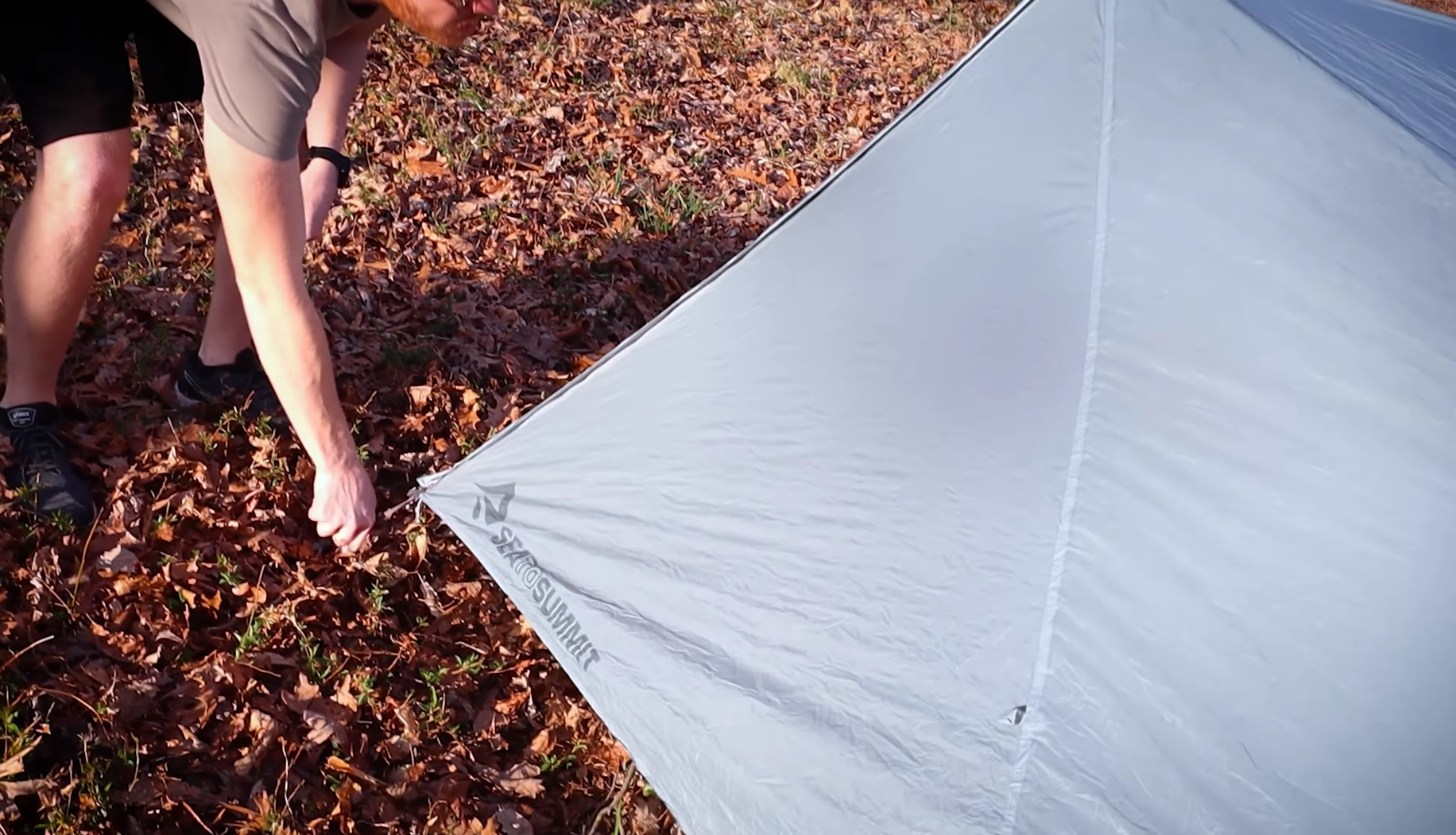
Hammock camp
If you are a hammock camper, there is an extra step you need to take in order to stay dry. You should always invest in a tarp for your hammock. This will keep the rain off of the top of your tent and help protect you from the elements. When setting up the tarp, be sure to leave enough slack so that it can capture any wind-driven rain. Additionally, make sure it’s tied down securely so that wind gusts don’t cause it to rip or tear. Lastly, look for tarps that are treated with waterproofing agents so they don’t allow leaks through them.
Finally, make sure to check your hammock’s straps often and tighten them if needed. This will keep the hammock from sagging and creating miniature pools of water under it. Additionally, if you are in an area with lots of trees, you may want to invest in straps that have a rubberized coating on them so they don’t slip off when it gets wet. [1]
By taking these extra steps, you can ensure that your tent stays dry even in bad weather. It is worth investing time and effort into these steps as they will help protect you from the elements and make your camping experience more enjoyable. With proper preparation, keeping your tent dry during a rainstorm should not be an issue!
After Camping
Once you’ve enjoyed your camping trip, it’s time to pack up and get ready to leave. But how do you make sure your tent stays dry while packing? This is especially important if there’s rain in the forecast or if you were caught in a downpour during your stay. With the right steps, keeping your tent dry during and after camping doesn’t have to be a challenge.
First off, never attempt to put away a wet tent straight away as this will just trap moisture inside and can lead to mildew growth. Instead, allow plenty of time for the tent to air dry before tackling the take-down process. If possible, set up the tent again at home and let it dry in the sun for a few hours to make sure that all moisture has evaporated.
To pack away the poles, frames and pegs of your tent, use an old sheet or towel as a cushioning layer between them so they don’t rub directly against each other. Pack these items separately from any accessories such as roof vents, mesh pockets and rain flaps, and be sure to keep the tent bag open until everything is fully dry.
Finally, inspect your tent for any patches or holes that may have occurred during your stay – these should be fixed as soon as possible with a suitable repair kit to prevent future water damage. With these simple steps in place, you can ensure that your tent stays dry and secure even after a rainy camping adventure!
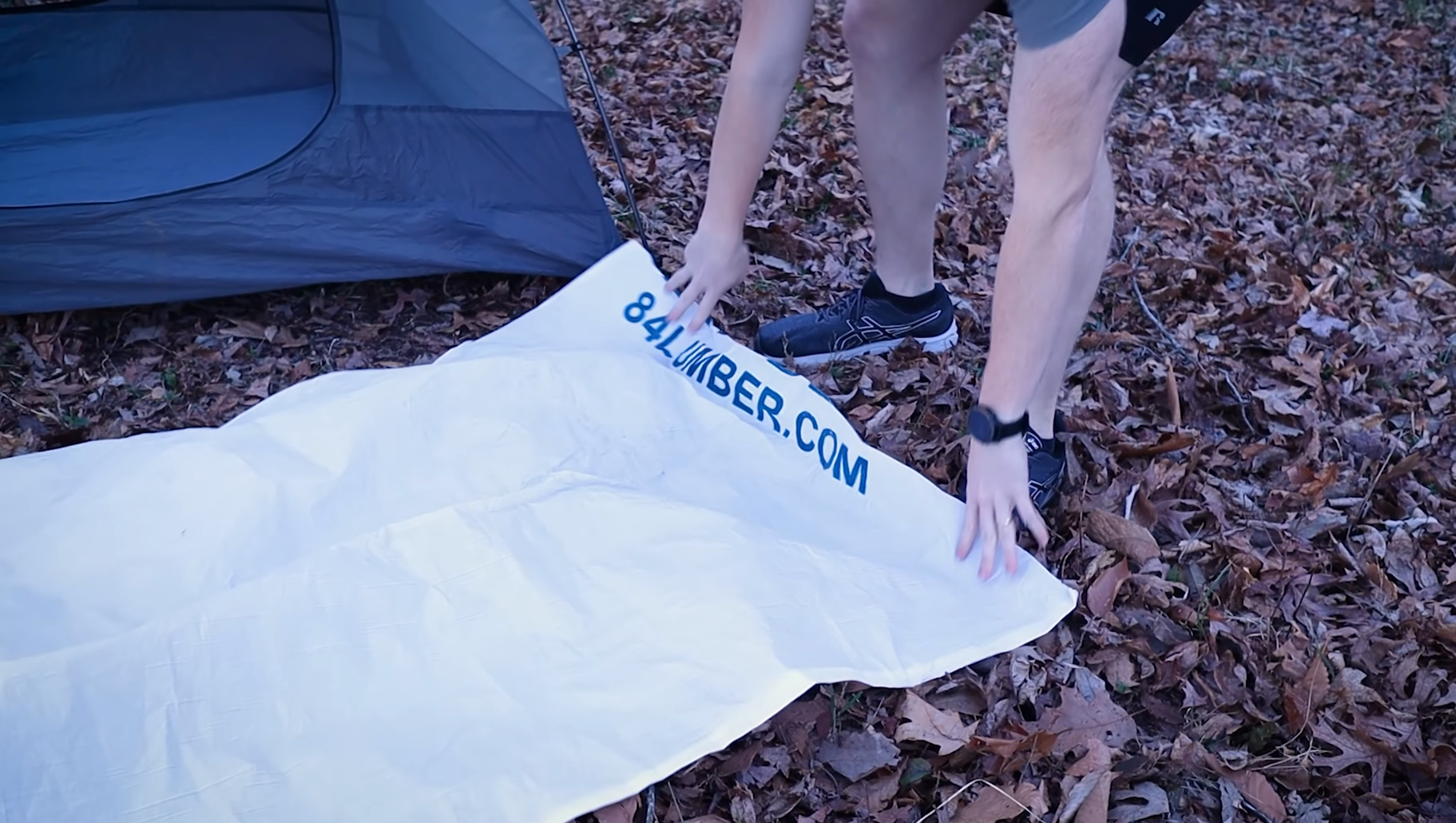
Lay out your tent
Before taking down your tent, it’s a good idea to take an inventory of all the pieces and parts. This should include the tent poles, rainfly, pegs and stakes, as well as any other accessories that may have been used during your stay. Having everything laid out will make sure you don’t forget anything when it comes time to pack up.
Other Considerations
There are a few other points to consider when trying to keep your tent dry in the rain. First and foremost, try to choose a campsite with some natural cover such as trees or large rocks that will help deflect some of the rainfall. If you’re camping near water, make sure you’re at least 200 feet away from any known flooding areas.
Finally, be prepared for wet weather before starting your trip by bringing enough waterproof gear to keep you and your camping equipment dry. This includes raincoats, waterproof shoes, and umbrellas or tarps for extra shelter.
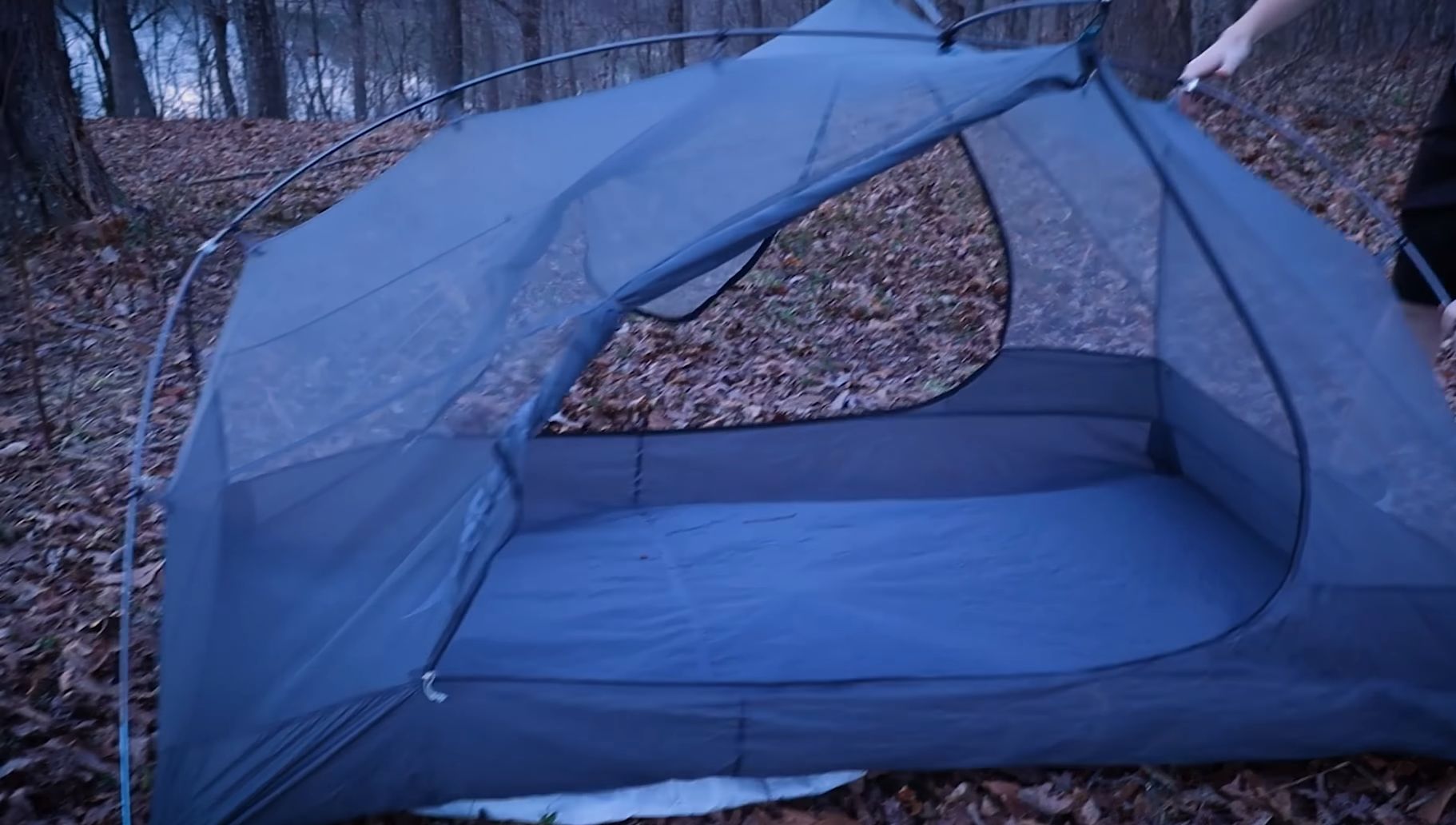
Consider sustainable tent textiles
When setting up your tent, it is a good idea to consider the kinds of materials used in its construction. Synthetic fabrics such as nylon and polyester generally provide better weather resistance than cotton or canvas-based material. If you’re looking for a fabric that offers optimal water repellency, look for something with a “hydrostatic head” rating of at least 2000mm. This indicates that the fabric can resist water pressure of up to two thousand millimeters before allowing any moisture through.
Use quality rain gear
Invest in quality rainfly and floor mats for your tent, as they will provide ultimate protection from water and moisture. Make sure you also invest in a durable ground tarp that extends beyond the edge of your tent. This will help protect against both ground water and splashing raindrops. [2]
FAQ
Can tents survive rain?
Yes, tents can survive the rain. In fact, if you take the right precautions and use the appropriate materials when setting up the tent, then it should keep you dry even in heavy downpours. However, it is important to be aware that all tents are not waterproof and may need some additional protection or maintenance to stay dry in wet weather conditions. [3]
Can you sleep in a tent when it’s raining?
Yes, you can still sleep in a tent when it’s raining. However, there are a few things to bear in mind if you want to remain as dry and comfortable as possible during your camping trip.
The most important thing to do before setting up camp is to find a spot that has adequate drainage. Avoid any low-lying areas or spots with standing water; these can easily flood and leave your tent wet and soggy. Pick an area with higher ground instead, preferably one that slopes away from the direction of the wind and rain.
When setting up the tent, make sure all of the seams are sealed – use sealant specifically designed for tents if necessary. Sealing off any potential entry points for water will help keep you dry. If possible, angle your tent so it faces away from the rain. This will help prevent any direct contact with the elements and make sure that you don’t wake up to a soggy sleeping bag.
If you don’t have a waterproof tent, consider investing in a tarp or ground cloth to place beneath it. Not only will this act as an additional barrier against moisture, but it can also protect the bottom of the tent from wear and tear. [4]
Finally, be mindful of how much condensation builds up inside your tent during the night – ventilate when necessary to avoid getting too wet! With these simple tips, you’ll find that sleeping in a tent during inclement weather is possible and can even be quite enjoyable.
Why Does Tent Leak When It Rains?
Tents are designed to be waterproof and protect you from the elements when camping outdoors. However, there can be times when even a well-made tent will leak if it gets too wet or is exposed to heavy rain. This can often occur due to seams not being sealed properly, gaps in the zipper line, or simply from age and wear and tear of the fabric over time. Whatever the cause may be, having your tent suddenly start leaking during a storm can put a damper on any camping adventure!
How Long Can I Leave A Tent Wet?
Even the best waterproof materials will eventually start to leak if they are left wet for too long. If your tent is exposed to constant rain or moisture, it’s important that you take it down as soon as possible and allow it to air dry. Not only does this prevent further damage from occurring, but it also helps reduce the chances of mold and mildew forming on the fabric. Depending on how much rain your tent has been exposed to, you should aim to take it down and let it dry within 24 hours. [5]
If you don’t have access to a place where you can fully air out your tent, then consider wiping down any areas that are particularly soaked with a towel or cloth. This will help absorb some of the excess moisture and help the drying process along. Additionally, you should open up any windows or vents on your tent to let air circulate inside so that it can dry more quickly.
It’s also important to remember that if your tent is made from synthetic materials, it should never be put in a washing machine or dryer as this could damage the material or ruin its waterproofing properties. Instead, simply spot-clean with warm water and mild detergent as needed.
Useful Video: 7 Tips -Stay Dry When It Pours Rain At Camp!!
Conclusion
Keeping your tent dry in the rain is essential for staying safe and comfortable while camping. There are several key steps to making sure this happens — choosing the right location, setting up a tarp over the tent, using sealant or tape on seams, investing in waterproofing products, adding extra layers of fabric, and packing a groundsheet. If you follow these tips when setting up camp in wet weather, you can help ensure that your tent stays dry and that you have an enjoyable camping trip!
Additionally, remember to inspect your tent before each use for any tears and rips that may need resealing or patching up; this will help minimize water penetration should it start to rain. Taking the time to check the condition of your tent can save you a lot of hassle in the long run.
We hope this guide has been helpful in showing you how to keep your tent dry in the rain. Now, get out there and have fun! Happy camping!
References:
- https://www.mossyoak.com/our-obsession/blogs/how-to/camping-in-the-rain-7-tips-for-keeping-your-tent-dry
- https://daretobeawildflower.com/how-to-keep-your-tent-dry-in-rain/
- https://www.mossyoak.com/our-obsession/blogs/how-to/camping-in-the-rain-7-tips-for-keeping-your-tent-dry
- https://www.go-outside.com/camp/simple-7-getting-a-good-nights-sleep-in-a-tent/
- https://campinghabits.com/how-long-can-you-store-a-wet-tent/


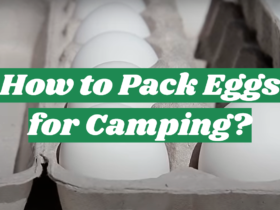


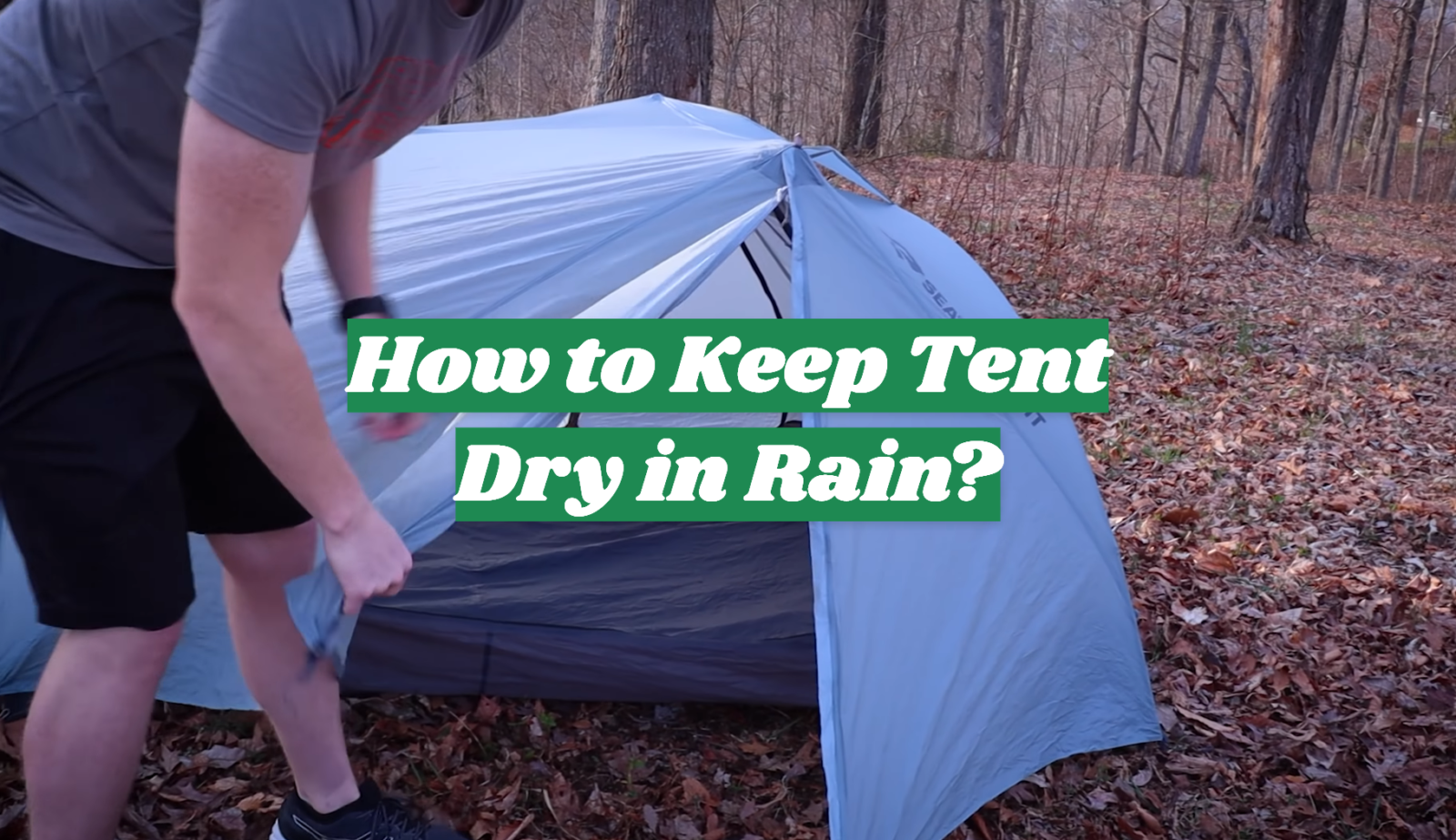


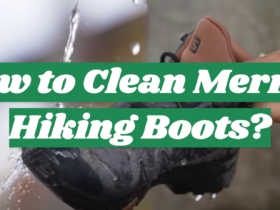
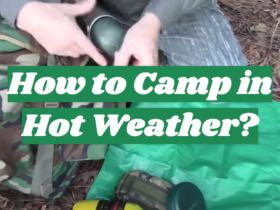
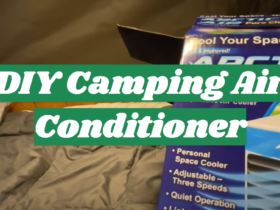
Leave a Review